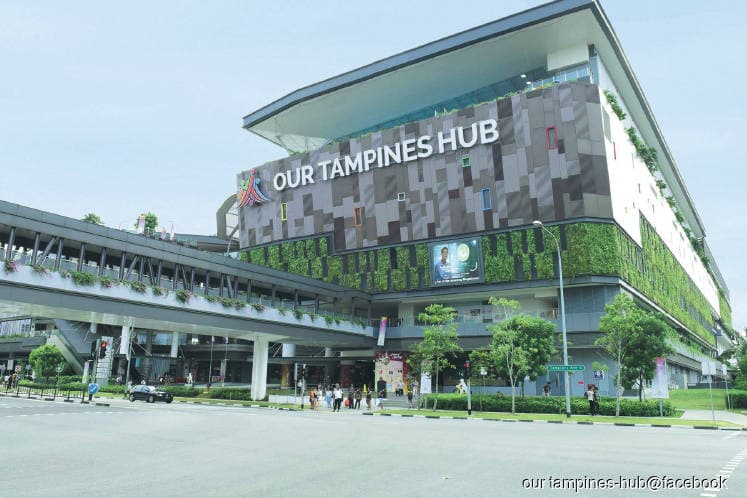
This article first appeared in The Edge Financial Daily on August 5, 2019
Singapore: With a small population and no natural resources to depend on, Singapore has learnt long ago to take nothing for granted.
This was the underlying message shared during a recent visit to the city state by members of the Malaysian media under its 14th Malaysian Journalists Visit Programme, which coincided with its bicentennial celebration this year, where a series of events and exhibitions were planned to commemorate the 200th year since Sir Stamford Raffles first landed in Singapore, in 1819.
A half day spent with its armed forces reminds one how Singapore relies heavily on a pool of conscripts or national servicemen, who make up over 80% of its military defence system and form the backbone of the Singapore Armed Forces (SAF). The lack of land also means they have to make good use of simulation technology for training.
Singapore’s national service (NS) is no stranger to us across the Causeway. Introduced in 1967 to help build the military force of the then-newly independent Singapore, the NS is a national policy that requires all male Singaporean citizens and second-generation permanent residents to serve a period of compulsory service in the uniformed services. Upon enlistment, they have to serve for two years in active duty as a full-time national servicemen in the SAF, after which they transition into an operationally ready reservist state.
“We have a small population of just 5.9 million. Our NS works because it is equitable — every Singaporean male has to do it. And we do not take away from the economy because every single Singaporean is needed. So after the first two years, they return to work, to grow the economy. They only come back [for training] for two weeks out of each year in the next 10 years,” an SAF officer explained.
Everyone is needed and no one can be spared. This same philosophy applies to how Singapore makes use of its land, and how it tries to harvest every single drop of rainwater — on top of its efforts to desalinate sea water and recycle sewage — to meet its water needs.
Just last year, Singapore was honoured as the Smart City of 2018 at the Smart City Expo World Congress in Barcelona, where judges were impressed by how Singapore systematically pursued the application of innovative digital technologies to improve its people’s lives. The city state was lauded for its many government-developed solutions, from dynamic public bus routing algorithms to predictive analytics for water pipe leaks.
No effort is spared when it comes to making the city more appealing, sustainable and comfortable for its people. For example, it recently built Our Tampines Hub (OTH), Singapore’s first and largest integrated community and lifestyle hub that caters to the needs of residents in Tampines and the eastern region of Singapore. Conceptualised in consultation with 15,000 residents, the massive complex opened two years ago. It offers more than 30 community, sports, cultural, civil and lifestyle facilities integrated over 5.7ha.
A prototype development that takes a “whole-of-government” approach with over 12 government agencies under one roof, OTH, which was one of the places the Malaysian journalists visited, also doubles up as an art centre and waste recycling facility, complete with its own rainwater harvesting system.
Singapore’s careful planning and space use, together with the urban solutions it has come up with to maximise what little it has, is an undeniable source of pride to its people today. In fact, the country has set up a dedicated Centre for Liveable Cities to research, collate and to share key learning points from its urban development journey since its independence in 1965 — when it was no more than a gritty port town — with the aim of positioning Singapore as a global hub for urban solutions.
Deputy Prime Minister Heng Swee Keat was modest when Malaysian media asked if he thought Singapore could be a governance and development model for other nations.
“I would say that there are things which Singapore has done, which are helpful to others, and we are very happy to share that. But I would not hold Singapore out as a model because I think in the earlier years of our development, we benefited greatly from learning from various countries...”
“In the same way, if you look around the world, everyone has a slightly different model of development. But I think what matters is that the citizens of that country must accept that and must be prepared to support those policies and say, ‘Well, these are good. These are good policies that will help the country develop, that will bring about a better life for our people.’”
“So, I do not think there can be a one-size-fits-all model that everyone should adopt. But we must always learn from one another. And there are many things that we must continue to learn,” he said.
With Singapore’s principle of not taking anything for granted and leaving little to chance, it would be interesting to see how it moves forward from here. One of the more immediate challenges would be its upcoming general election, which is due to be called no later than April 2021, and in the picture is Lee Hsien Yang — the estranged younger brother of Prime Minister Lee Hsien Loong — openly backing the newly set up opposition party, the Progress Singapore Party.